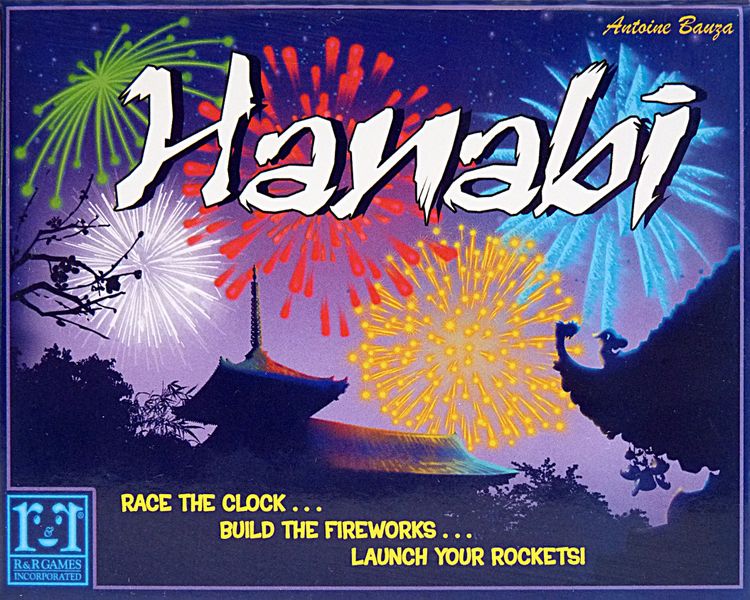Hanabi (2010) Board Game
Hanabi is a cooperative card game designed by Antoine Bauza and released in in 2010. The game has gained popularity for its unique gameplay mechanics that rely on communication and deduction. Players work together to create a fireworks display by playing cards in a specific order without being able to see their own hand.
Game Components of Hanabi
How To Setup Hanabi
To set up Hanabi, shuffle the deck and deal four or five cards to each player, depending on the number of players. Each player holds their cards facing away from themselves, so they can see everyone else’s cards but not their own. Place the eight clue tokens and three error tiles within reach of all players. If using card holders, distribute them to help players manage their cards without the temptation to look at their own.
Gameplay Mechanics and Game Objective
Mechanics
Game Objective
Player Experience
Playing Hanabi is a unique and challenging experience. The game requires intense collaboration and deductive reasoning, as players must interpret clues carefully to make informed decisions. The tension builds as the game progresses, especially when deciding whether to play or discard a card with limited information. The game’s pace is dynamic, starting with a flurry of clues and ending with high-stakes decisions to avoid errors.
Pros
Cons
Personal Thoughts on Hanabi
Hanabi is ideal for players who enjoy cooperative games, deductive puzzles, and unique game mechanics. It is particularly suited for groups looking for a challenging yet engaging experience that requires teamwork and strategic thinking. However, it may not be the best fit for those seeking a more casual or straightforward gaming experience. Despite its critical acclaim, Hanabi’s appeal is highly subjective, and its enjoyment depends on the players’ willingness to adapt to its distinctive gameplay style.
We are supported by our audience. When you purchase through links on our site, we may earn an affiliate commission, at no extra cost for you. Learn more.

